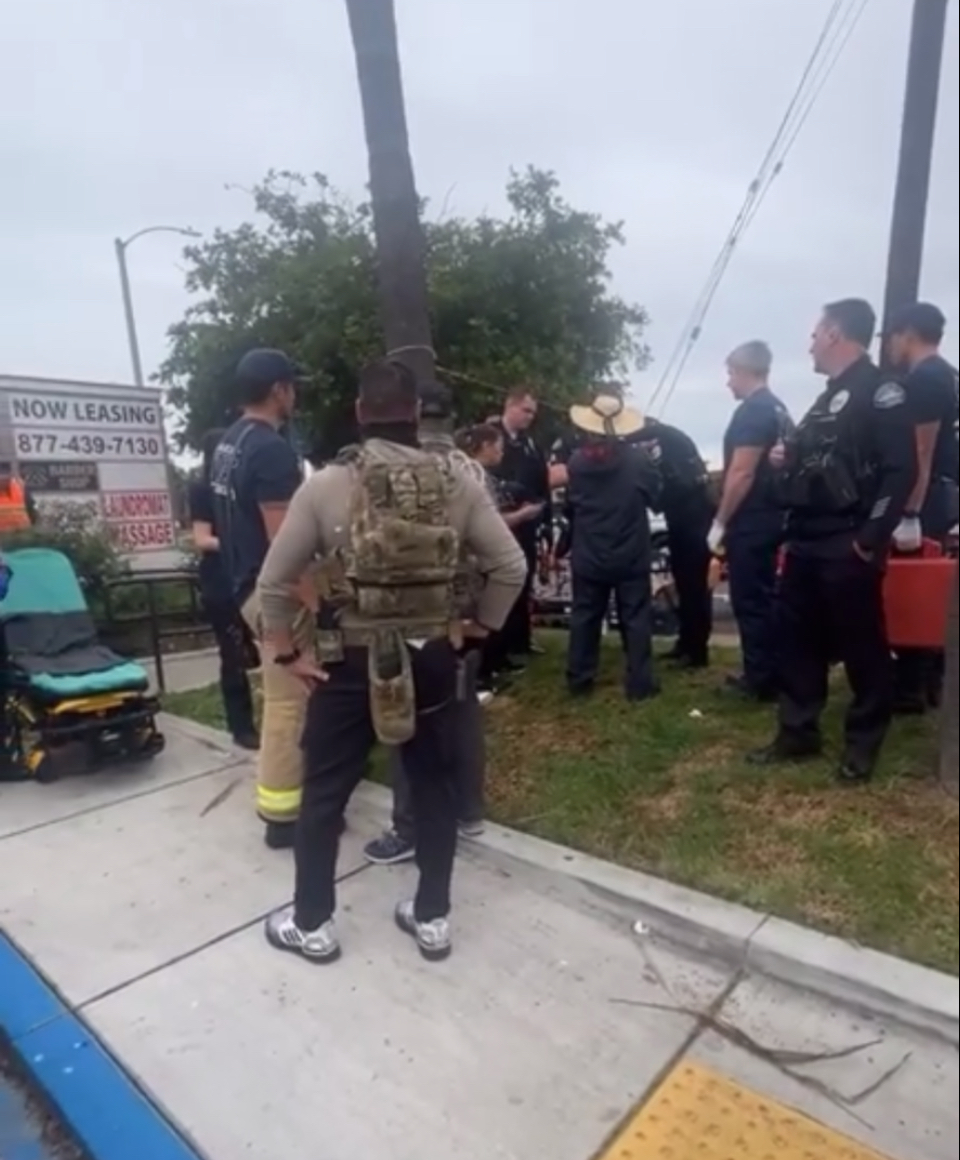There is a lot of information out there in cyberspace about what to do if you find kittens, but I wanted to write this short piece to provide information specifically for folks living in Los Angeles.
I have been a cat volunteer at Los Angeles city shelters (first North Central and currently Chesterfield Square / South L.A.) for many years, and there seems to be a lot of confusion about this subject.
If you find kittens, the first thing to do is figure out if the mom is still in the picture.
You should NEVER take kittens (“kitnapping”) unless they are in imminent danger. You should first determine whether the mom is still taking care of them.
Moms often leave kittens to go get food. This is normal. Healthy kittens look plump and clean. In situations where the mom has disappeared (I don’t think that mama cats regularly abandon their kittens, but unfortunately, things sometimes happen), the kittens may be crying and look skinny and unkempt.
It is especially important not to take kittens that are still nursing because they are just like nursing human babies—they need to be fed every couple of hours. This is difficult, and it’s always best to let the mom do this job, so again, don’t take kittens away if the mom is around! You wouldn’t be helping at all.
Suppose you bring nursing kittens to a shelter. In that case, they are in very real danger of being euthanized. Most shelters do not have the capacity to feed kittens every couple of hours, and they usually don’t have enough fosters to help. By the way, if you CAN foster “bottle babies,” please reach out to your local shelter or rescue and let them know! Bottle baby fosters are always badly needed.)
If the mom is still around...
You should first ask around in your neighborhood accounts on NextDoor, the Neighbors section in Ring App, and community-related Facebook groups to see if anyone is missing their cat. If they are, you could try to help them get the kittens taken care of and get the mama spayed (a law in Los Angeles). You can also get in touch with a rescue or a shelter to see if you can get the mama scanned for a microchip to determine whether she has a home.
If the mama cat is friendly, see if you can coax her and her babies inside or partially inside. That way, she can continue looking after them in a safe environment. You could provide her with food, water, and a safe place to be while the kittens are getting a little bigger.
There are a myriad of dangers for cats and kittens out on the street (the word is that cats are one of coyotes’ favorite foods), so inside is definitely better. Also, cats can get pregnant again even while they’re nursing, so it’s great to keep them inside and avoid that if possible.
While they are inside with you, engage with the mama and the babies.
The friendlier they are, the more easily they will get adopted. If you are unfamiliar with cats and unsure how to engage with them, there are loads of information online about interacting. It’s especially useful to handle, play with, and pet the kittens. Socialized kittens find homes much more quickly than unsocialized ones. And socializing should start when kittens are young, so as they get older, they see that most people are a-OK.
At around four to six weeks, kittens can start transitioning (being weaned) from mom’s milk to solid foods. It is important to do it properly and not rush them. When they are done or about done nursing, this is a good time to bring mom in to get spayed (and get vaccinated!). You could also have her vetted for serious diseases like FiV or FeLV. If you have a vet that you like, make an appointment with them (you can even make an appointment as soon as the mama comes into your house. Make it for six weeks or so from then). It will be ok for her to be away from her babies for the surgery (and recovery) because they are already eating on their own.
From there, you should decide. Do you want to keep this lovely lady, find her a new home yourself, or bring her to the shelter to be adopted?
The shelter should be a last resort, but it is an option. Some L.A. County shelters have very high, heartbreaking rates of euthanasia, so I would not recommend that you bring an animal to a shelter like that.
You should go to the shelter that services your zip code, but if you find that shelter to be a high-kill one, reach out to rescues instead for assistance. (You can check animal shelters’ statistical reports, like these, to get euthanasia statistics. For comparison, a “no-kill” shelter should have a 90% or more “live outcome” rate.)
Never show up to a rescue or to a shelter; always call ahead. Most have processes about how they intake animals, and it can really gum up the works if you show up with a cat(s), plus you will likely get turned away (and that is frustrating).
If you decide to try to re-home her yourself, ask a lot of questions of the potential adopters.
Charge a fee (it could be to cover the cost of her spay surgery and vaccines). Don’t give her away for free to a stranger, but to absolutely to a trusted friend. Do your best to try to ensure she’s going to a safe home where she’ll be cared for properly. You can look at adoption forms on cat rescue websites to get an idea about what types of questions to ask.
If you don’t have a vet or can’t afford to take her, there are a few options:
Go to L.A. Animal Services' website and apply for a voucher for free or low-cost spay and neuter. Once you have the voucher, you can make an appointment with a participating clinic.
Search online for free or low-cost spay and neuter clinics and free or low-cost vaccine clinics. One good option is Community Animal Medicine Project.
Currently, many clinics are very backed up for spay and neuter appointments, so make the appointment as soon as you start caring for the cat. Make it six weeks or so in advance so you can feel relaxed knowing that you already have an appointment for the mama to get taken care of down the road.
If you decide to take her to an L.A. city shelter, they will spay her there before she gets adopted, so it is unnecessary to get her spayed in advance unless you are having a hard time keeping her inside.
The kittens can be spayed or neutered as early as five weeks or so (the general rule of thumb is that they can get the surgery when they weigh two pounds), but they are still so small at that age.
As they are in your care, I would wait until they are a little bigger and can handle the surgery better. But they should be kept inside. Female kittens can go into heat (and become pregnant) at as early as four months old, though usually, it’s around six to nine months old. At the shelter there are definitely a lot of very young mamas (one year old or less).
Like tiny humans, kittens also need a round of vaccines- you can talk to your vet or check online to see which ones and at what age they are needed.
As with the mama, you can decide whether you will keep the kittens, try to find homes for them, or bring them into a shelter to be adopted. If you plan to find homes for them yourself, keep in mind that, whenever possible, kittens should be adopted in pairs or go to a home with another kitten to avoid single kitten syndrome. As mentioned earlier, there are certain shelters I would not bring kittens into because they are too loose with euthanasia.
If the mama is a feral lady (not friendly to people), you can put something outside for her and the kittens to get cozy in. A simple box with a blanket is nice, but you can go crazy and give them fancy outdoor accommodations if you want to. You can also provide food and water so that she doesn’t have to stray far in order to eat and feed her babies- safer for all of them.
Even if the mom isn’t friendly, you can still try to win over the kittens. Hang around, use toys, talk to them, bring out the treats, and try to cuddle them. It will be much easier to find homes for them if they aren’t totally petrified of people, and you don’t want to wait too long before socializing.
Three to nine weeks of age is the generally agreed-upon best time-frame for socializing kittens, though it can happen later, just not as quickly or easily. Once the kittens start to wean, you can plan to trap everyone (mom and kittens), TNR (trap-neuter-return) the mom, and find homes for the kittens.
You can currently get a permit for trapping from L.A. Animal Services, and plenty of TNR organizations around (and online info) can help guide you in how to trap a cat humanely. However, as you are trying to trap the mom and the kittens all together, it might be helpful to call in an experienced trapper to assist you, if you’ve never done it before (a drop trap could be useful here).
You should never trap a cat without already having a spay or neuter appointment and a safe place to keep the cat overnight (the night before the surgery and the night after while it's recovering).
You should also never leave a trap out without monitoring it. It is obviously stressful for a cat to be in a trap, so you want it to be there for as long as possible before returning it to exactly where you found it. It is a very kind and caring thing to do to continue feeding the cat once she has been returned.
Urban cats can usually find something to eat, but not always, and if you feed her, she’ll always have a source of food, and you can also keep an eye on her to make sure that she’s not ill or hurt. Just because she’s not friendly doesn’t mean she doesn’t deserve respect and care like all other living things.
The kittens that you trap should be socialized as much as possible before trying to find a good home for them or bringing them to a humane shelter. They could be returned back to the street, but it’s always better for cats to live inside when possible.
If the mom is still not around...
If you feel confident that the mama is no longer with the kittens, bring them inside and keep them in a safe and warm place. If they still seem young enough to be nursing (see this great kitten age guide), immediately get nursing supplies and milk. Some rescues or shelters may be able to provide you with these supplies, or you can find them at a pet store.
Never feed bottle babies with cow’s milk or human baby formula.There are great tips here you can follow. (Shelters and rescues also often offer bottle baby training classes, which you could take just in case or to become a bottle baby foster)
Once you have fed the kittens and they are safe and warm, you could call humane shelters and rescues to see if you can surrender the kittens to them. However, I feel quite certain that they will ask you if you can keep them, at least until they are eating solid kitten food, because shelters and rescues are overwhelmed and, as mentioned earlier, don’t often have the capacity to care for nursing kittens.
It will be a huge help for an already very-overburdened rescue community, but touching base with a shelter or rescue may still be useful in case you have questions and or need support. Once the kittens are eating on their own, you can decide if you want to keep them, find a home for them yourselves, or bring them into a shelter for adoption.
If you are able to re-home them yourself, please make sure that they are either spayed or neutered first unless you are 100% confident that the person adopting them will take them to get spayed or neutered. We will never stop seeing kittens being born and dying on the street if people do not get much more serious about spaying and neutering (which is a law in Los Angeles).
We are in the middle of kitten season right now- the time of year when most kittens are born- and it is pretty crazy how many kittens are coming into the shelter on a daily basis. Unfortunately, although many people love kittens, the rate of adoption seems to have slowed.
Rescues around Los Angeles are also full of kittens (and cats, who often get overlooked for adoption when there are adorable kittens right next to them), and it is exhausting trying to keep up. Every year shelters and rescues brace themselves for kitten season as though the ensuing tidal wave is a foregone conclusion, and it will always be unless we as a community can rally to make things better.
What is the best way to help? Spaying and neutering your pets, making sure your neighbors are spaying and neutering their pets, and helping street cats get spayed and neutered.
There are a million reasons why it is in the best interests of cats to be spayed and neutered, but if you’re still somehow thinking that it’s not such a big deal, check out TNR organizations’ websites / social media accounts to see pictures of kittens born on the street, male cats that are fighting all the time, and moms on their sixth litters.
Or talk to your vet about all the health benefits of spaying or neutering for cats. There are MANY. Help us to help L.A. cats by breaking the cycle!







